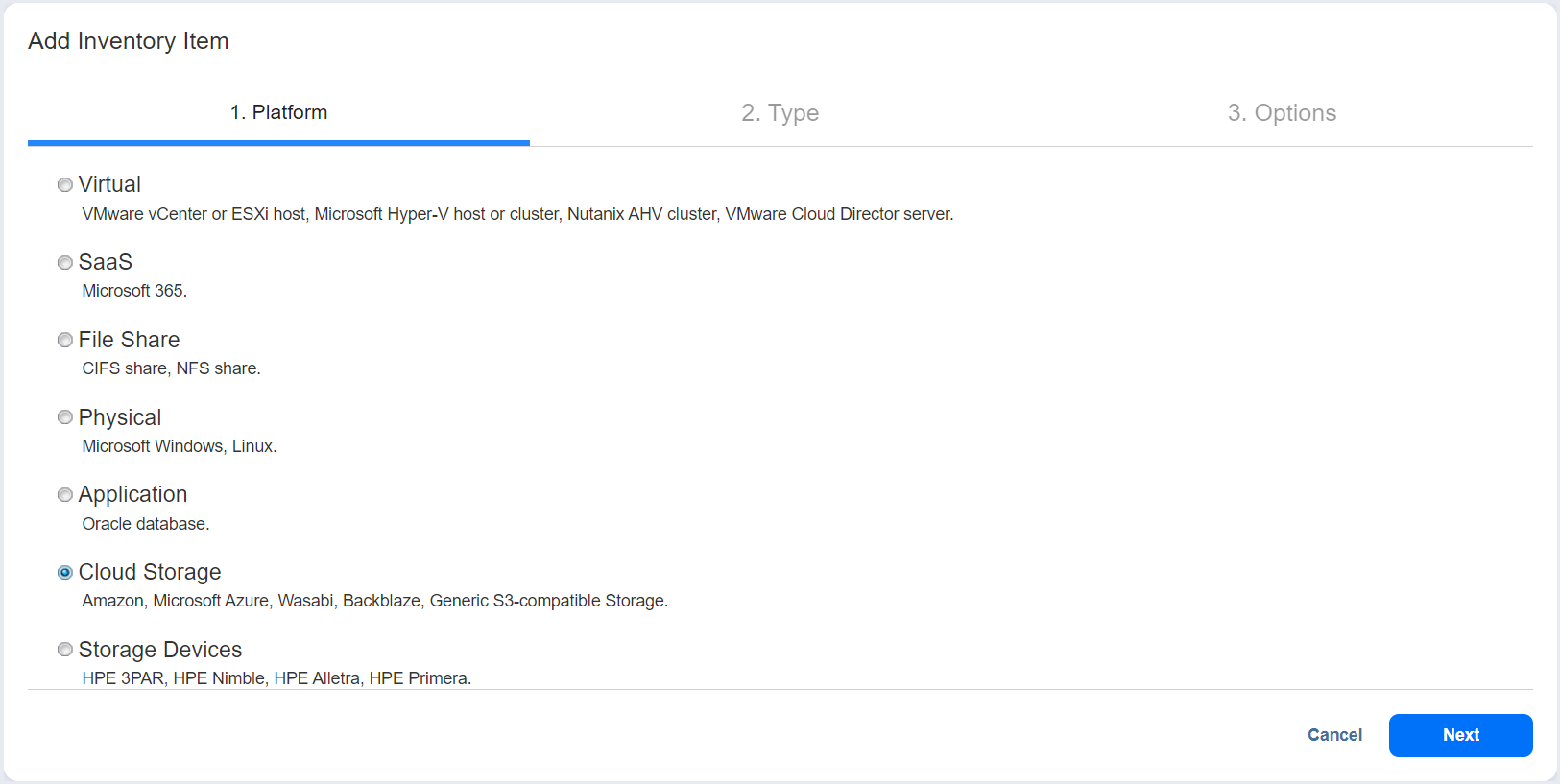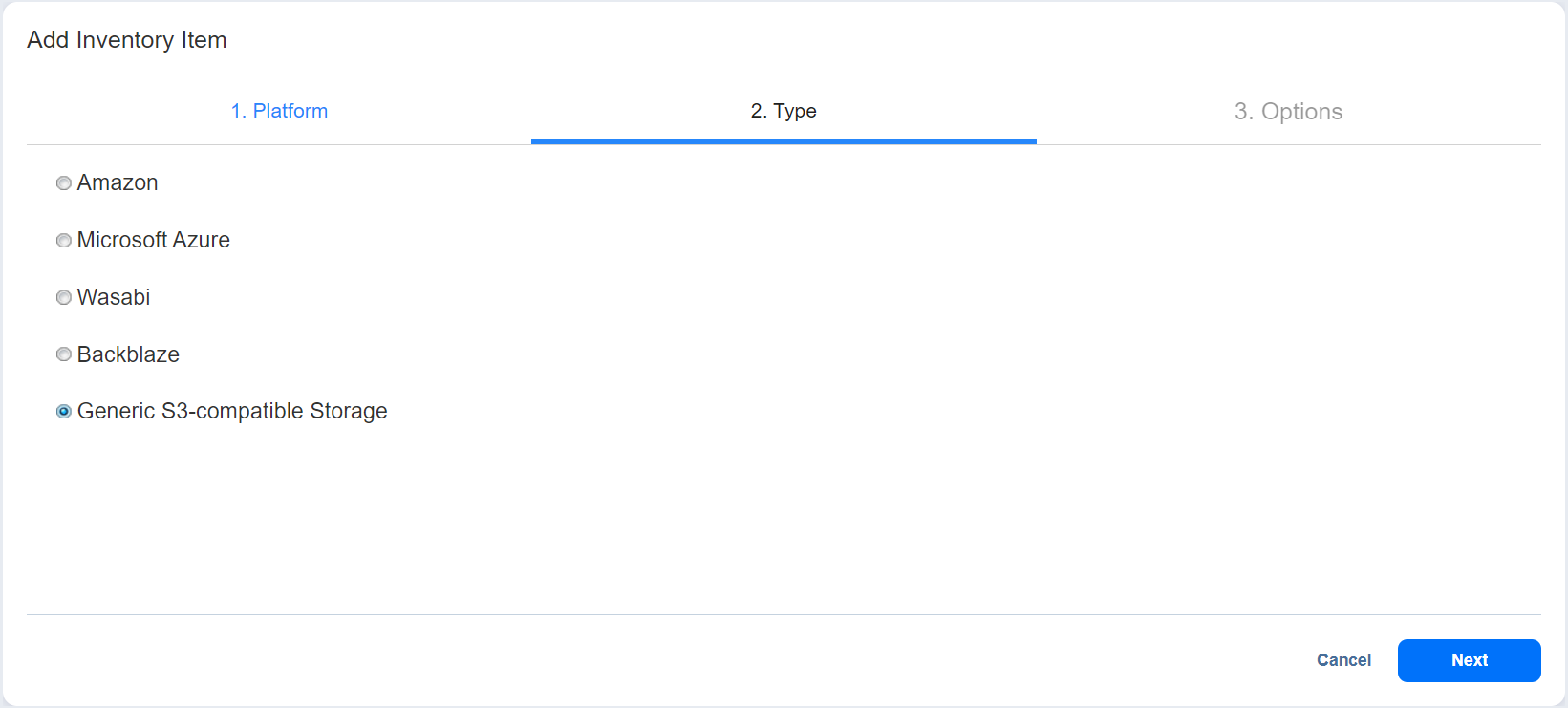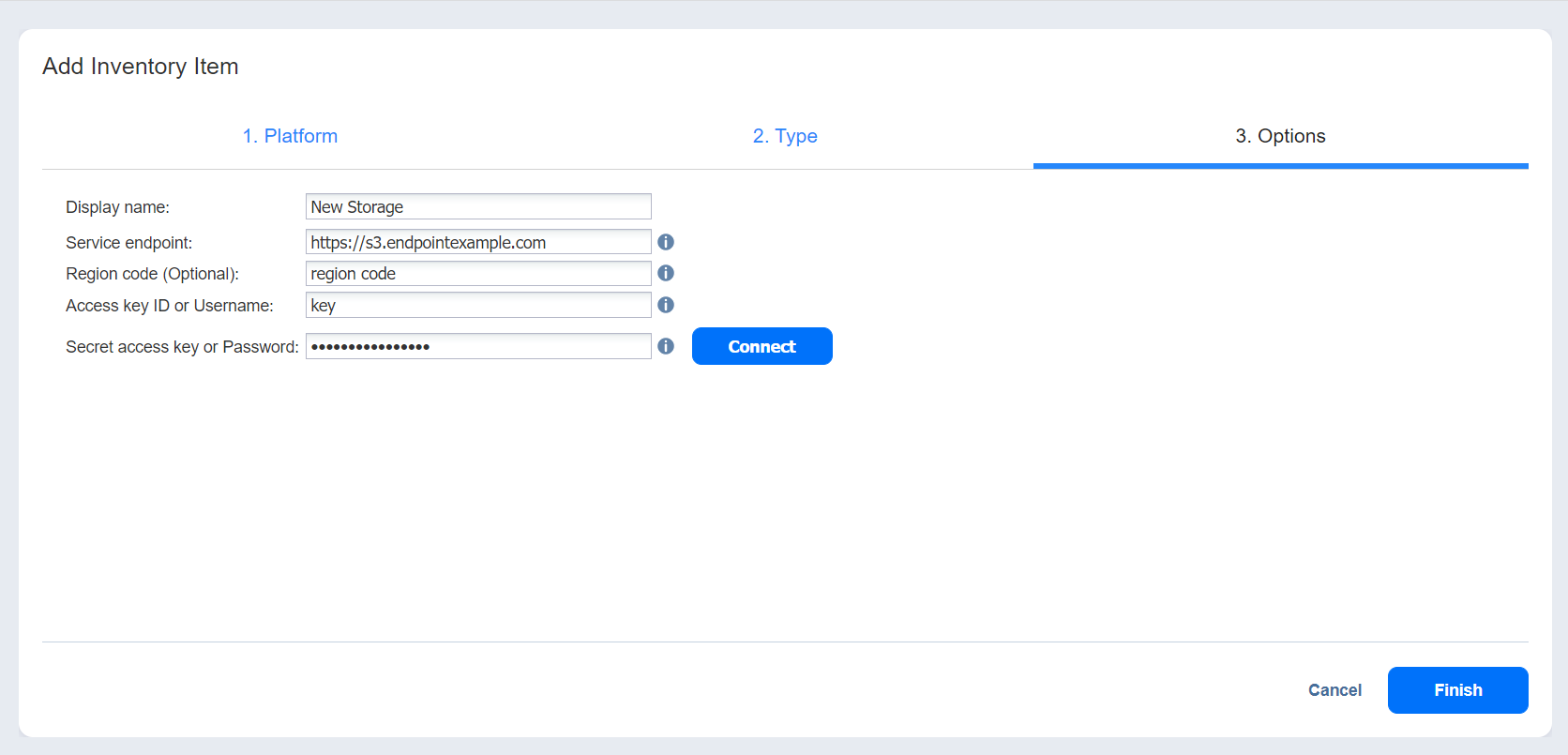Adding Generic S3-Compatible Object Storage
Note
Only specific S3-compatible vendors are supported. Please see Feature Requirements for more information.
Before adding a generic S3-compatible object storage to the Inventory, obtain the following credentials for your storage service:
-
Access Key
-
Secret Key
If you don’t have your storage credentials, check the service’s web console for a corresponding section (or ask your storage service administrator for assistance). If needed, generate a new Access Key and Secret Key in the web console or via SSH.
Note
For Google Cloud Storage, ensure the Google Cloud is properly configured:
-
Default project for interoperable access is set in Google Cloud Console.
-
HMAC keys are created.
-
Cloud Storage request endpoint configured.
For more information, see How to add Google Cloud Storage.
To add S3-compatible object storage to Inventory in NAKIVO Backup & Replication, follow the steps below:
-
Verify that the S3-compatible object storage meets Feature Requirements.
-
Click Settings in the main menu of NAKIVO Backup & Replication.
-
Go to the Inventory page and click "+".
-
On the Platform page of the wizard, select Cloud Storage and click Next to proceed.
-
On the Type page of the wizard, select Generic S3-compatible Storage and click Next to proceed.
-
On the Options page of the wizard, provide the following information:
-
Display name: Specify a name for the S3-compatible object storage device. This name will be displayed in the Inventory.
-
Service endpoint: Enter a full HTTP/HTTPS URL that is used to access the storage.
-
Region code: Optionally, enter the technical region code where the data is stored. To enter several region codes, separate them using the semicolon “;” symbol. It is highly recommended to leave this field blank.
-
Access key ID or Username: Enter the storage access key ID or username that was created during account setup or on the App Keys page in your storage account.
-
Secret access key or Password: Enter the storage secret access key or password that was created during account setup or on the App Keys page in your storage account.
-
Click Connect to bring up the Certificate Details popup.
Note
The Connect button may be disabled if no HTTP/HTTPS certificates are detected or required for the storage to be added to the Inventory.
-
-
-
Optionally, you can select Auto accept new certificate if this certificate is expired or changed.
-
Click Accept to confirm the certificate.
-
Finally, click Finish when you are done.
Note
When configuring NGINX Proxy for MinIO Server used as the vendor for generic S3-compatible object storage, make sure you either turn caching off (proxy_cache off;) or set proxy_cache_convert_head off;.
Find more information on the topic here.


